Combat aircraft. Pe-8, not becoming a "flying fortress"
But to compare, you must first really go through stories plane.
The story began around the middle of the 30s of the last century, when the appearance of a heavy bomber formed in the heads (important) of both commanders and designers aviation future war.
In general, three countries achieved success: the USA, Great Britain and the USSR. In the USA, this resulted in the creation of the B-17 “Flying Fortress”, the British got Halifax, and in our country TB-7.
Then came the sequel, regarding the Americans and the British. Unfortunately, our TB-7 / Pe-8 was released in such a modest series that it’s not worth talking about any comparison with the British and Americans. 97 aircraft, including two prototypes, are very few. 12 731 “Flying Fortress” is, you know, quantity. 1 to 131.
However, ANT-42 was, turned into TB-7, and then renamed to Pe-8. This is our story, by the way, that part that can and should be proud of.
What is the point? The bottom line is that since the beginning of its existence, a country that could only build simple airplanes with imported engines, suddenly flung itself on such a thing as building a heavy bomber.
Yes, there may have been some prerequisites and developments from Sikorsky and Lebedev, but this is so ... "Ilya Muromets" and "Svyatogor" remained in the unimaginably distant past, in the Russian Empire, and other people began to create a new country’s aviation in other circumstances.
The only thing related to RI is the lack of aircraft engines. This problem ceased to be such only at the end of World War II.
In these conditions, to be turned into a “strategist" of that time ... It was rather risky. Moreover, before the work on the prototype ANT-42 began, our heavy bombers looked like ... like TB-1 and TB-3.
If you look at these planes, placing them next to the TB-7, progress ... no, progress is evident. These are definitely aircraft of different generations. There, RD could well stand nearby, it is also ANT-25, from which, after successful flights to America, the crews of Chkalov and Gromov also wanted to make a very long-range bomber. But it did not happen, so our TB-7 is the only one of its kind.
Naturally, the TB-7 was needed yesterday, because the work was carried out as always, at an accelerated pace, under the fatherly urging of the Air Force leadership. The tests were still going on in the 1937 year, and the generals from the Air Force demanded that five machines be made for the 1 in May 1938 of the year. As usual, to the "next anniversary" ...
Thank God it didn’t work out. And work with a bunch of tweaks and improvements were completed only in the 1939 year.
It was planned to produce TB-7 at Kazan plant No. 124. This was natural, since the plant was under the patronage of Tupolev and was equipped with the latest technology. American. A large number of machines and equipment were purchased in the United States according to the choice of Tupolev himself during his visit.
There were problems. I would call the main problem not the lack of machine tools and equipment, this was an order, the currencies did not spare it. The main problem was personnel shortage. You can, of course, nod to repression, but, in my opinion, the purges of the late 20's - the beginning of the 30's took many specialists to nowhere.
The fact that Tupolev, Petlyakov and others have developed an airplane is really half the battle. The plane had to be built, and for such a machine it was not easy.
A vivid example: TB-7 was, as you know, a four-engine aircraft. But there was a fifth engine, which propelled the ACN-2 centrifugal compressor, supplying air to all 4 motors at high altitude. It was a real highlight of the aircraft, the ACN-2 allowed the aircraft to climb to such a height where it was not afraid of anti-aircraft artillery at all. And the fighter of that time to climb to a height of 10 000 meters was not an easy task.
When the assembly of the first series of aircraft began, it suddenly became clear that there was no one to build the ACN-2. It turned out to be a rather strange situation: the People’s Commissariat of the Aviation Industry simply did not appoint a manufacturer for the ACN-2. As a result, at the facilities of TsIAM (Central Institute of Aviation Motors named after Baranov), 6 ACS-2 units were built, after which the institute categorically refused to build a supercharger further.
And the lack of a supercharger turned the high-altitude monster TB-7 into a rather ordinary bomber with a practical ceiling into the standard 7-8 of thousands of meters. That is very average indicators.
Meanwhile, the high altitude and high speed of flight at this altitude were the "chips" of TB-7, from which the use of the aircraft was built.
To top it off, this is already a classic of the genre, problems began with the supply from the engine factory No. 24 of the main engines AM-34FRN.
And in the second half of the 1939 year, the personnel leapfrog, due to various reasons, began as expected. But the fact that the directors at plant No.124 changed systematically and regularly, so that in the interval from 1936 to 1941 the year of general was 4 (four).
How under such conditions the plant was able to produce the first two cars in general - well, that was a labor feat that was usual for that time. These were fully equipped vehicles with ACN-2. There were machine kits for two more planes, and then ... And then there weren’t even AM-34FRN engines.
The most interesting thing is that TB-7 really wanted to get in the Air Force. Moreover, in decent quantities, in the 1940 year, the Air Force wanted to get 250 aircraft. The plant called the real number in 150, with the well-known reservations "if" with respect to engines and the ATSN.
But the Air Force wanted to get into service with the TB-7, it’s absolutely impossible to say that the bomber was "scored", everything that comes from the unprofessionalism of those planning in the People’s Commissariat. One could demand anything, but if there were no engines and a supercharger for the plane, even the figure named by the director of the plant, Joseph Nezval in the 150 of the planes, turned out to be ... too optimistic.
What happened today is called the word "feil." At the beginning of the 1940 year, the situation was simply awful: for two years, the factory number 124 produced 6 (SIX !!!) machines and the same number were in different degrees of assembly. Without engines, because engines ... Well, you understand.
And of the six aircraft released, two were not with a pair of AM-34FRN + ACN-2, but with AM-35 engines, that is, what was mentioned above.
To say that everything suited everyone - no. The Air Force persistently demanded airplanes, the plant demanded engines, the letter that test pilots Markov and Stefanovsky wrote to Voroshilov himself in December 1939 was preserved in history.
The result ... The result was more than strange. At the beginning of the 1940 of the year, from NKAP, plant No. 124 received instructions to disassemble all the equipment for the manufacture of airframe assemblies, including the removal of assembly stocks. This is like the final point.
Moreover, in order to somehow load the huge plant idle, the NKAP instructs the start of construction of the PS-84, the Soviet version of the Douglas DS-3. On the one hand, the experience later came in handy when copying the Tu-4, which the B-29, on the other, did not become a heavy bomber.
However, letters and appeals did their job, and somehow it reached Stalin himself.
And it began ...
Strange, but for some reason there were no executions and landings. To the great chagrin of a certain caste of writers.
The guilty party was appointed Mikhail Kaganovich, the head of the NKAP, the elder brother of Lazar Kaganovich. In the spring of 1940, Aleksey Shakhurin was appointed to the post of People's Commissar of the Aviation Industry, and Kaganovich was sent to atone for sins to the position of ... Director of Plant No. 124!
Not only was Kaganovich charged with returning the TB-7 assembly, but also obliged to consider the possibility of producing TB-7 with other types of engines, since there was no AM-34FRN, specifically with the M-30 aviation diesel engine.
The M-30 engine was in its class at that time the largest aviation diesel engine in the world. At the beginning of the 1940, the M-30 passed state tests and was launched in a small series at factory No. 82, but was soon withdrawn from the series due to a number of problems.
However, after a change in the leadership of the NKAP, work on it was resumed under the leadership of the deputy commissar Alexander Yakovlev and production began again under the new designation M-40.
However, the operation of the M-40 just on the TB-7 showed that at high altitudes (above 5 000 meters) with insufficiently accurate manual adjustment of the quality of the fuel mixture, the M-40 sometimes stalled. A restart of the diesel in flight by the crew was not always possible. So despite the unequivocal successes, aircraft diesel engines in the global aircraft industry are not widespread. The USSR did not become an exception.
Today we can talk a lot about the reasons why this happened. Yes, we did not have the technology and production culture at the highest level, therefore, with the implementation of the idea of using a diesel engine in aviation, I had to say goodbye.
Kaganovich as the director of the plant began to produce AM-35 engines instead of AM-34FRN and at the same time worked on the installation of diesel M-30 and M-40.
Georgy Baidukov himself was invited to test the TB-7 with M-40 engines. This only emphasizes how much the Air Force was interested in TB-7.
State tests in full of all problems of the new engines did not reveal, at least in Baidukov's reports this is not reflected. There were many unpleasant surprises during the military operation, but I am far from thinking that Georgy Filippovich Baidukov had hidden something. Wrong bird flight he was.
Perhaps the first M-40 diesels were assembled so that they did not mow, but the subsequent ones were not very good. The fact is that the “diesel” TB-7 aircraft, even in theory, met the requirements of the 25 Decree. 05. 1940, in practice, it was necessary to fine-tune the entire propeller-engine group of the aircraft.
Although it is entirely possible that Kaganovich and the plant he heads were simply in a hurry to give the Soviet Air Force a good plane. They spoke about the war at all levels then, and so someone, and the brother of Lazar Kaganovich himself was also in the know.
But there is one unpleasant moment. Yes, the practice of beautiful reports already existed then in all its glory and harmfulness. Tests and especially refinements of aircraft with M-40 and M-40F engines dragged on. Factory number 124, in principle, had nothing to do with it, the issue was the lack of knowledge of the motors themselves, but the factory management knew that the M-40 was not perfect. However, for the entire 1941 year, the plant continued to collect “diesel” TB-7 and transfer them to the Air Force.
When the time came to fight, it turned out a lot of sad moments.
As a result, Mikhail Kaganovich shot himself in his office 1 July 1941 year. Without waiting for the party and people to ask for his obvious flaws as commissar and director.
And in the Air Force there were TB-7 with diesel engines M-30 and M-40 and conventional engines AM-34FRN and AM-35 with ACS-2. All of them went to the 14-th TAPAP of the 18-th HELL.
22 June 1941 year, the war began. At the time of the start, the crews of heavy bombers completed their training and were ready to proceed with the implementation of combat training plans.
At the airport in Boryspil, which in the early days of the war was subjected to German air raids, two cars were destroyed and several were damaged. The remnants of 14 TBAP were transferred to Kazan, where the formation of a new regiment on TB-7 aircraft began.
On June 29 on June 1941, the formation of a long-range aviation division as part of 412 TBAP on TB-7 and 420 TBAP on EP-2 began.
To upgrade the 412 TBAP, its commander, Colonel Lebedev, darted all over Ukraine, collecting planes. In Poltava, 8 cars were found, and 6 were also collected at airfields near Kiev and Kharkov. In general, it could have been worse with that organization and the chaos of the first months of the war. In addition, Lebedev took the planes from the LII and the Air Force Research Institute, several aircraft were in assembly stage in Kazan.
In general, the regiment was staffed very mixed. But the composition was selected from among the pilots of polar aviation and civil fleet, with a huge touch in difficult conditions.
Soon the numbering of the regiments changed. The regiment on TB-7 became the 432 APDD.
By early August, the removal and training of aircraft crews were completed, and, in fact, the TB-7 combat work began. Unfortunately, Berlin became the first combat target. The first raid on Berlin took place on 10 on August 1941 and ended in complete failure.
Of the 10 vehicles that left for Berlin (7 - TB-7 and 3 - Ep-2), they reached the target and only six were bombed. Only two cars returned to Pushkin. 6 aircraft made an emergency landing due to the failure of the M-40 engines or damage from anti-aircraft artillery. One was shot down by his fighter, the fate of one aircraft is still unknown.
After this departure, the division commander Hero of the Soviet Union Mikhail Vodopyanov was removed from the post of division commander, and Colonel Golovanov was appointed in his place. After dismissal, the brigade commander Vodopyanov continued his service as a simple crew commander of TB-7.
The TB-7 remaining in service, after some time, were brought into the 746 BAP. After the loss of Tallinn and bases on the islands of the Baltic Sea, raids on Berlin stopped. ADD aircraft continued to fly on combat missions on long and short range targets. And as the enemy approached Moscow and Leningrad, heavy bombers were taken to the airfield of the city of Kovrov, Vladimir Region, from which TB-7 flew to combat missions in the autumn-winter of 1941-1942.
An interesting nuance: diesels were no longer installed on the TB-7, for well-known reasons, but aircraft with the M-40 were still in operation. But no one was in a hurry to write off the M-40 or change it to AM-35, because "diesel" aircraft had a longer flight range than "gasoline" ones, and were reserved just for work on very distant targets.
In addition to working on long-range targets, TB-7 attacked targets in German-occupied Soviet territory. The tactics were as follows: raids were carried out by single crews, using the high-altitude characteristics of the TB-7. This made it possible to get close to the target at high altitude undetected and deliver heavy attacks on targets.
TB-7 could take up to 30 FAB-100, that is, as 5 Pe-2 bombers. The question was only accurate.
The flights were mainly carried out at night, but in critical moments, such as the fall offensive against Moscow, the TB-7 went on combat missions for tactical purposes and during the daytime. Of course, the two TB-7, led by Vodopyanov, striking at the mechanized units of the Wehrmacht, can not be compared with the 1047 of the British and American bombers over Cologne or 1520 over Hamburg.
In February 1942, V. M. Petlyakov died in a plane crash. After his death, the government decides to assign the designation Pe-7 in accordance with the new designation system for TB-8 aircraft.
The combat operation of long-range bomber formations, including crews on the TB-7, during the fall-winter of the 1941-1942 years showed the effectiveness and (not least) the need for long-range aviation.
On 5 of March 1942 of the year, by the decision of the GKO, it was decided to create a separate type of troops - Long-Range Aviation (ADD). From now on, the compounds of distant bombers stood out from the Red Army Air Force and were directly subordinate to the Headquarters of the Supreme Commander.
In the spring of the 1942 of the year, at the time of the formation of the ADD, the role of the Pe-8 in this new branch was extremely subtle. All Pe-8, which were in service at that time, were consolidated in the 746-th BAP as part of the 45-th Airborne Division ADD. There were 11 Pe-8 in the regiment, of which only 8 units were operational.
But even with so many pilots, Pe-8 tried to make a feasible contribution to the victory.
It is worth noting the creation, especially under Pe-8, of the largest at that time of the Soviet bomb FAB-5000.
FAB-5000 weighed 5080 kg, had a diameter of 1000 mm and a length corresponding to the length of the Pe-8 bomb bay. From the explosion of such a bomb, a funnel with a diameter of 18-24 m and a depth of 6-9 m was formed on the ground. A large railway bridge could be destroyed by such a bomb, even if the bomb exploded at 10-15 m from it.
Prior to this, the largest bomb that Pe-8 raised was the FAB-2000 bomb.
The bomb was located along the length of the Pe-8 compartment, but its meter diameter led to it protruding significantly beyond the fuselage contours and did not allow to completely cover the bomb doors.
By the way, in 15 years, it was the Tupolev Design Bureau’s unit under the leadership of I. F. Nezval, which “stuffed” the FAB-5000 into the Pe-8, will receive the task of placing the 202 thermonuclear bomb with the capacity of 100 megatons in the Tu-95 bomb bay.
On April 29 1943, the FAB-8 bomb on Koenigsberg was dropped from Pe-5000. Then there was a successful bombing on the concentration of German troops in the Mogilev region. On June 4, using the FAB-5000, we plowed the railway lines in the Orel region, making it difficult to transfer German troops to the Kursk ledge area.
By the way, not after the fall of the FAB-5000 in Helsinki in the 1944 year, did the Finns seriously think about what could come next?
In total, until the spring of 1944, the 13 FAB-5000 was dropped by German troops.
It is worth noting the peaceful flights of the Pe-8, the benefits of which were no less than military ones, and maybe even more.
It was the Pe-8 that drove the crews of the pilot-distractors to England, who drove the planes to the USSR. And they drove successfully.
We already wrote about that crazy flight, when in May PeNXXX in May 8, Molotov flew to the USA.
The commander of the ship was Pusep, the former co-pilot of Vodopyanov, the co-pilot - Obukhov, navigator - Romanov, engineer - Zolotarev. The plane passed through the front line over occupied Europe and landed on one of the airports in Northern Scotland. From Scotland, the Pe-8 flew to Reykjavik in Iceland, then, passing Newfoundland, headed for Washington, where it successfully landed.
Molotov flew back along the same route.
For the successful special flight, both pilots and the navigator were awarded the titles of Heroes of the Soviet Union, and the rest of the crew were awarded military orders.
This flight greatly lifted the spirit that in the Tupolev Design Bureau, that in the factory number 124. It was a really convincing demonstration of the capabilities of both the Pe-8 and the new AM-35A engines.
The 1944 year was the last year of the combat use of the Pe-8.
The main reason was not even obsolescence of machines and physical fatigue of equipment. The Red Army was approaching the borders of the Third Reich, of course, the ADD was relocated after the advancing troops, therefore, the aircraft could further penetrate into German space for bombing.
But then the pilots would have to face the most powerful German air defense, equipped with radars on the ground and night fighters with radar. Plus anti-aircraft batteries with a tip on the same radars.
Given the small number of Pe-8 remaining in service, the command came to the conclusion that pilots with such experience needed to be saved, and the tasks that the Pe-8 crews solved were quite capable of fulfilling the pilots of ordinary bomber regiments flying in the afternoon. During the day, superiority in the sky was already behind Soviet aircraft.
The Pe-8 military career ended in the 1946 year, and soon the Tu-4 began to replace them in the shelves. And most of the Pe-8 was decommissioned and disposed of.
After the war, several surviving machines were used in polar aviation and as flying laboratories for testing new engines and promising aviation and missile systems.
LTH Pe-8
Wingspan, m: 39,10
Length, m: 23,59
Height, m: 6,20
Wing area, м2: 188,68
Weight, kg
- empty aircraft: 19 986
- normal takeoff: 27 000
- Maximum takeoff: 35 000
Engine: 4 x AM-35A x 1350 hp
Maximum speed km / h
- by the ground: 347
- at height: 443
Practical range, km: 3600
Rate of climb, m / min: 352
Practical ceiling, m: 9 300
Crew, prs: 11
Armament:
- two 20-mm ShVAK guns,
- two 12,7-mm machine guns UBT,
- two 7,62-mm ShKAS machine guns,
- bomb load: normal 2000 kg, maximum - 4000 kg bombs.
Is it worth comparing Pe-8 with foreign colleagues? We will compare. At the appropriate time in OBM. Of course, as I said, the construction of such an aircraft today would be equated to an atomic cruiser or an aircraft carrier.
The fact that we were able to develop such an airplane, keeping up with the Americans and the British, is a feat in itself. The fact that these planes went through the entire war suggests that the feat was not in vain.
The fact that we were not able to build Pe-8s in thousands, like the British and Americans ... Well, unlike them, we had something to build. We needed Tanks, guns, trucks, fighters, rifles and machine guns.
Of course, building a bunch of heavy bombers, being thousands of kilometers from the front line, is not so difficult. And we would build, I'm sure of that.
Yes, immediately after the war, the Tu-4 that entered service was nothing but the B-29, which was simply copied. But then we have gone further and still are exclusively our achievements. So, starting with Ilya Muromets, through Pe-8 to Tu-160, such a development of long-range aviation is quite normal.
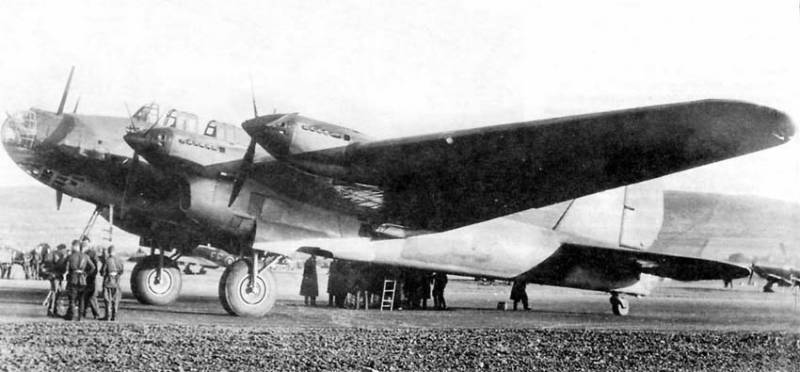
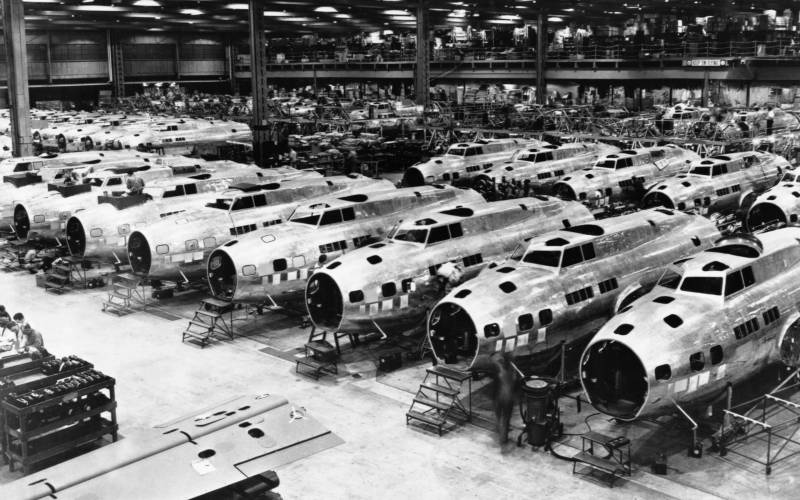
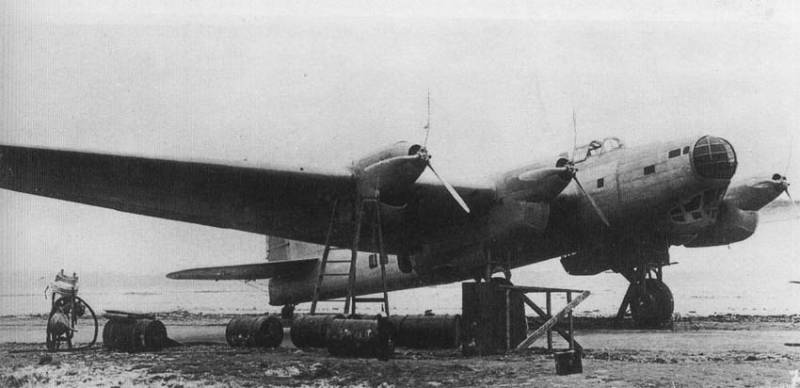
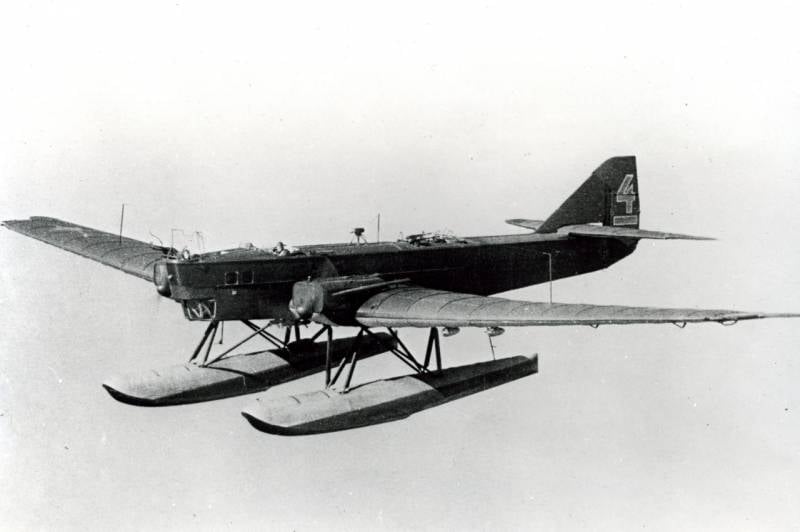
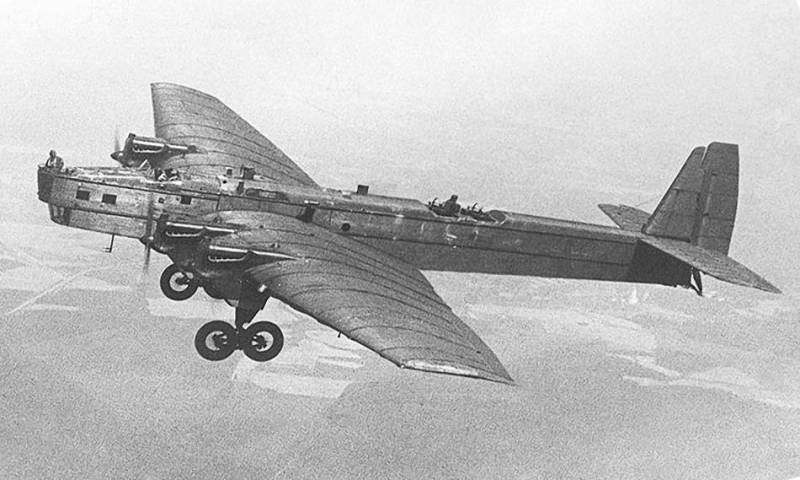
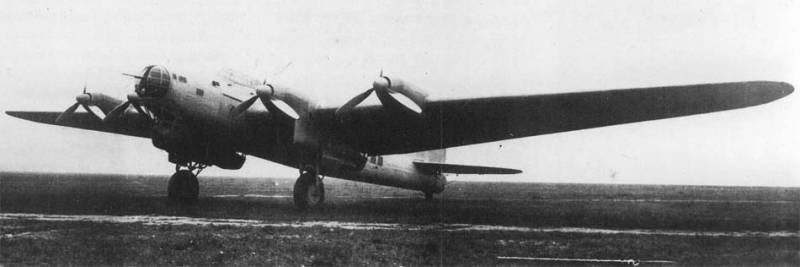
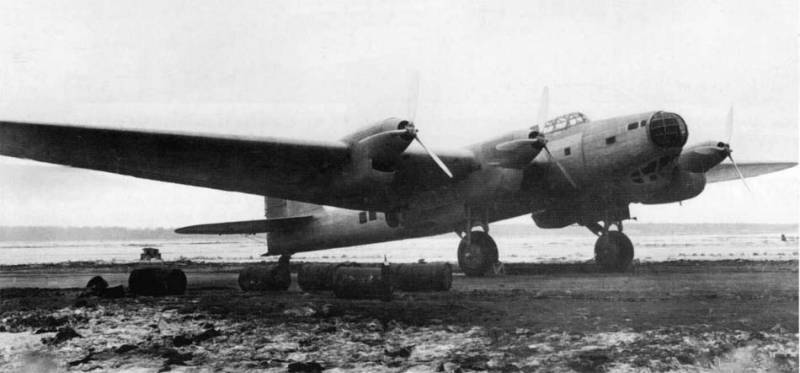
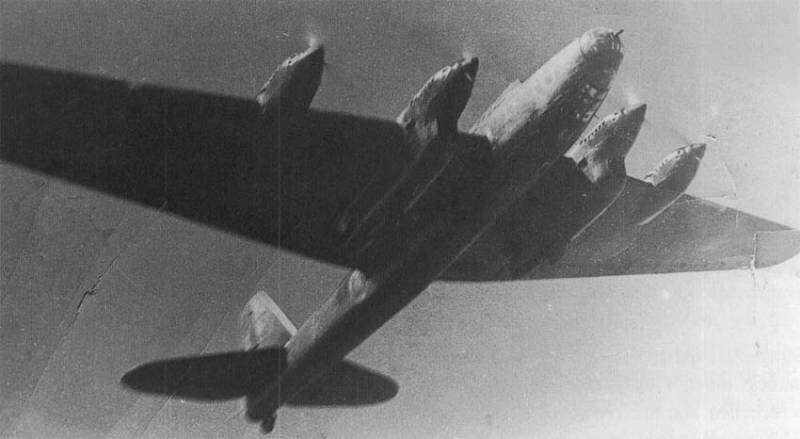

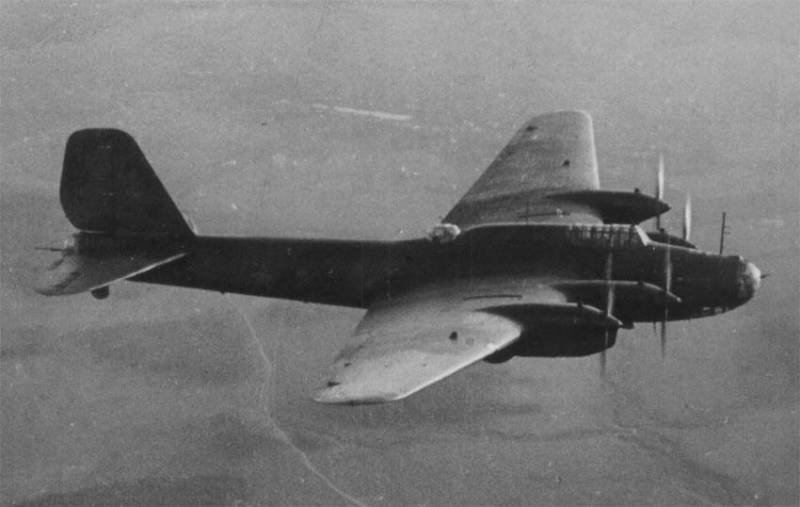
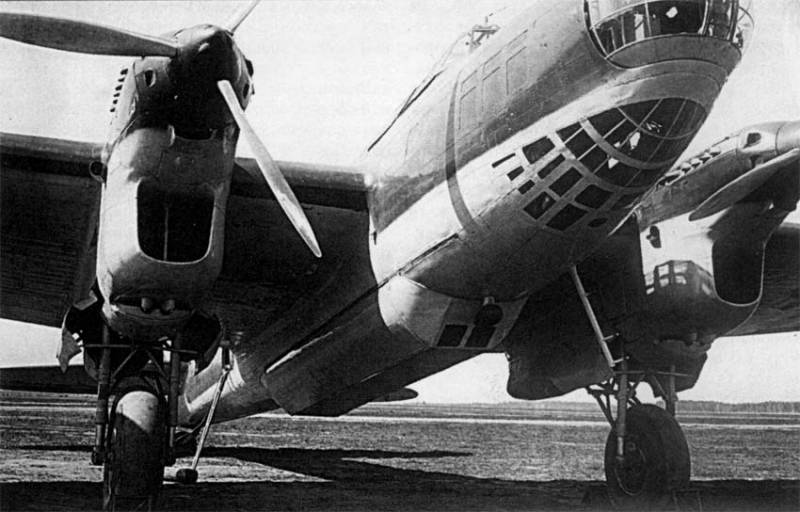
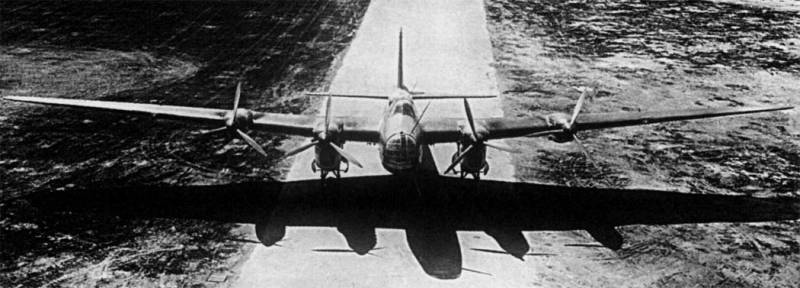
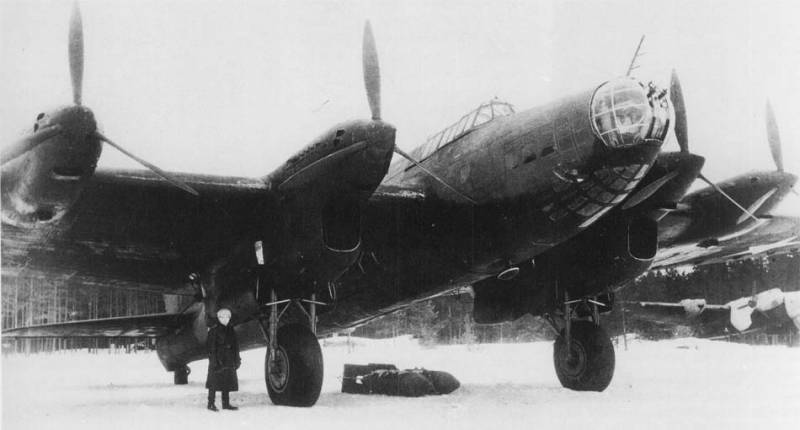
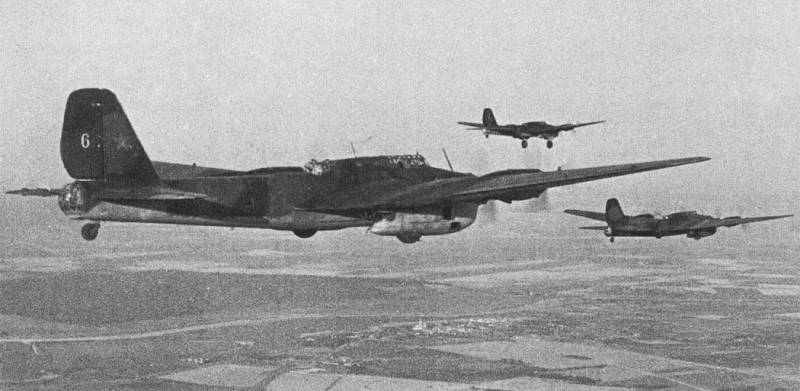
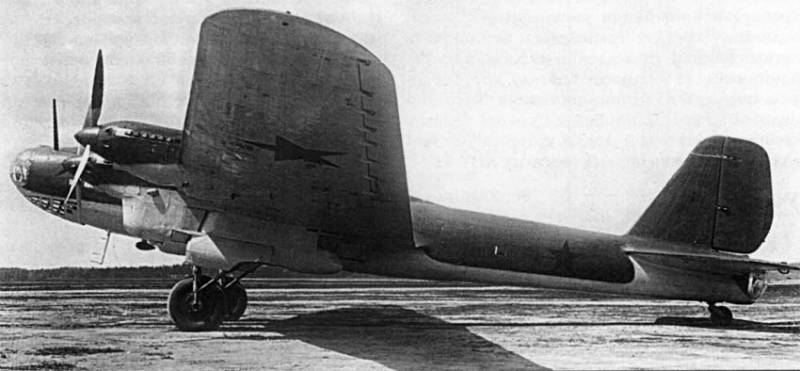
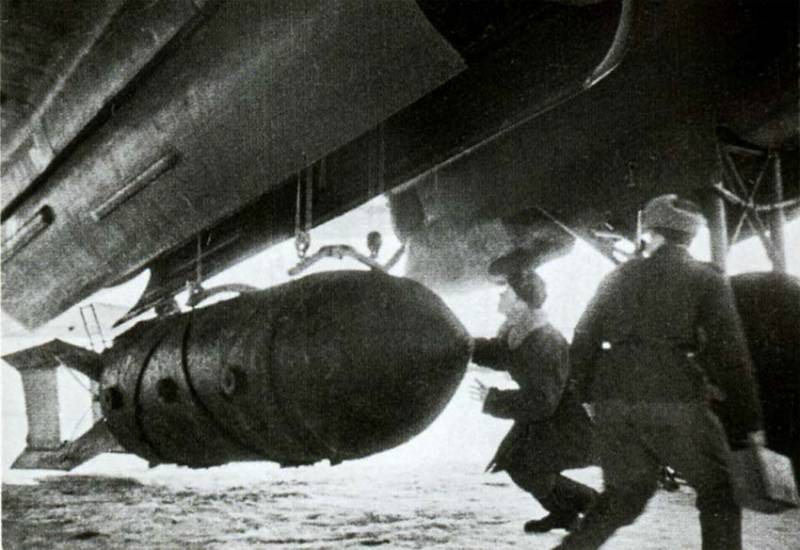
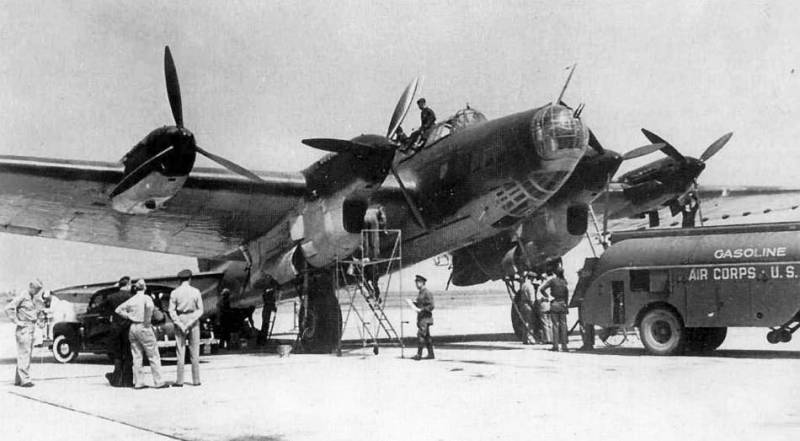
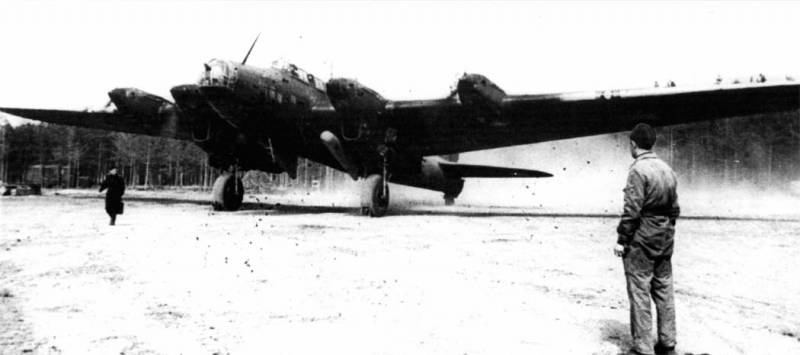
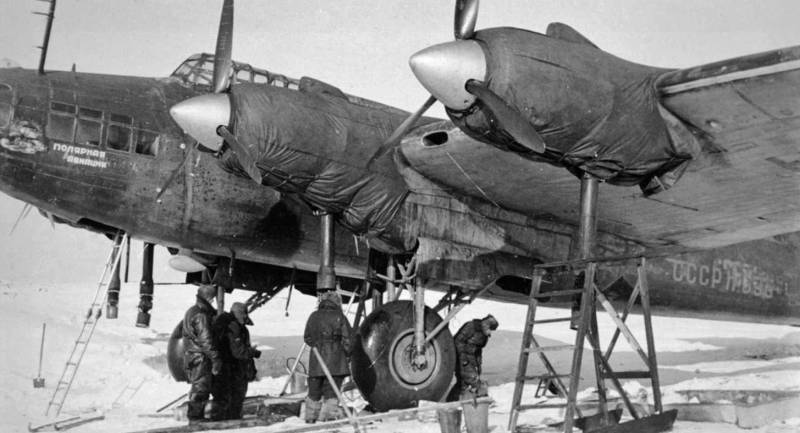
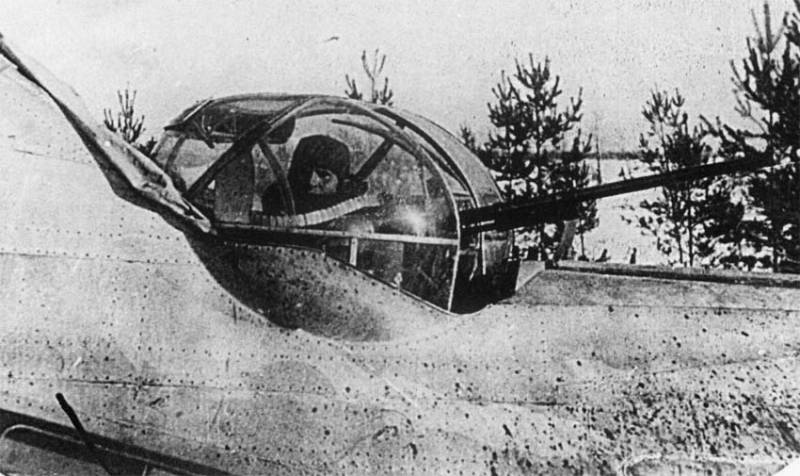
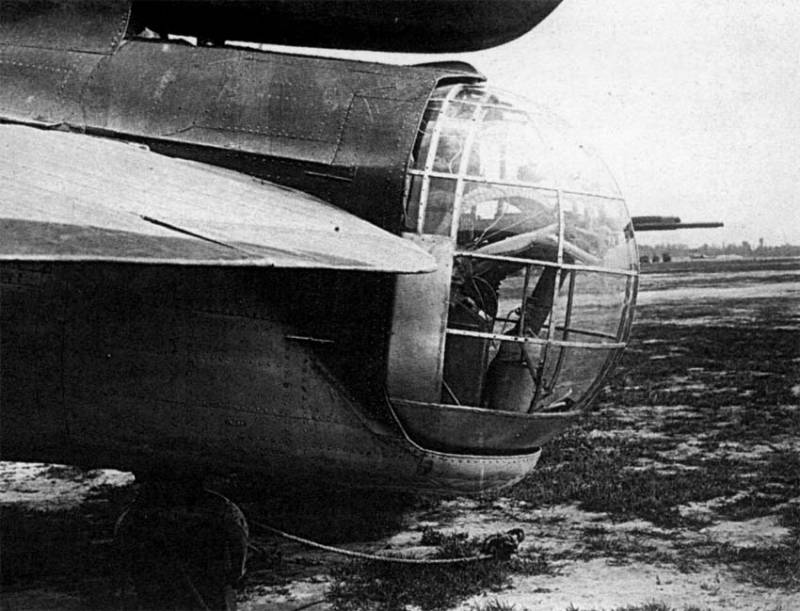
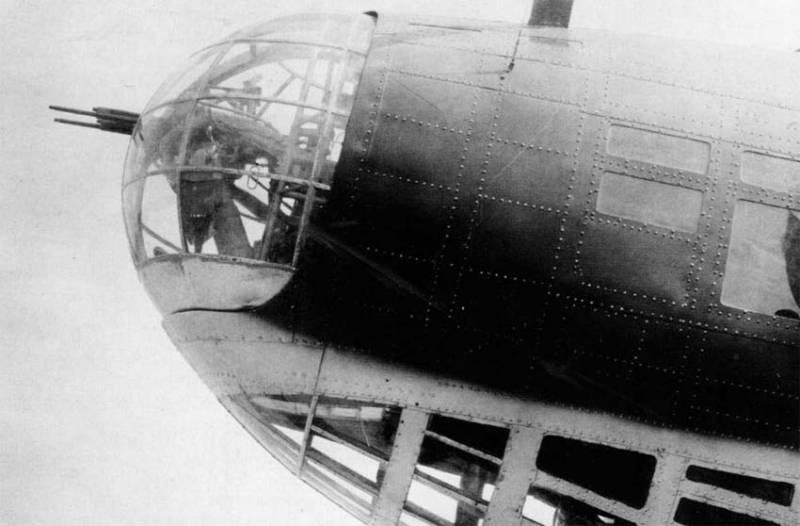
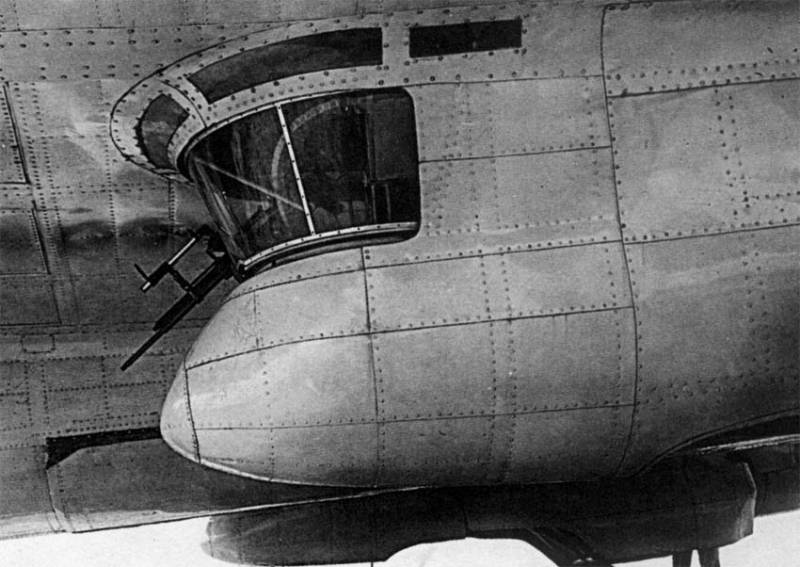
Information